Bubble Mathematics
For starters, bubbles are spherical because a spherical shape minimizes surface area for a given volume.
Also, since bubbles always try to minimize surface area two bubbles will merge to share a common
wall. If the bubbles are the same size, this wall will be flat.
If the bubbles have different sizes, the smaller bubble, which always has a higher internal
pressure, will bulge into the larger bubble.
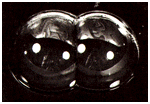
Regardless of their sizes, however, bubbles always intersect at an angle of 120
degrees. See the pictures to the left and right. On the right, all three bubbles meet at
the center at an angle of 120 degrees.
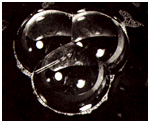
The 120 degree rule always holds, even with complex bubble
configuartions. In the picture below, the bubbles look like hexagons (whose interior angles are each 120 degrees).

An interesting experiment is to dip wire-frame models of geometric solids into bubble solution and see what results.
For example:
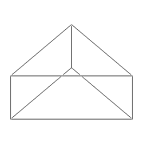

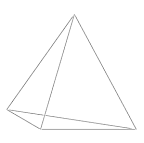
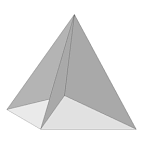
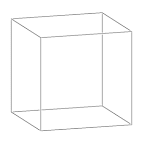
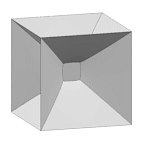
Return to Mathematrix

Regardless of their sizes, however, bubbles always intersect at an angle of 120
degrees. See the pictures to the left and right. On the right, all three bubbles meet at
the center at an angle of 120 degrees.
